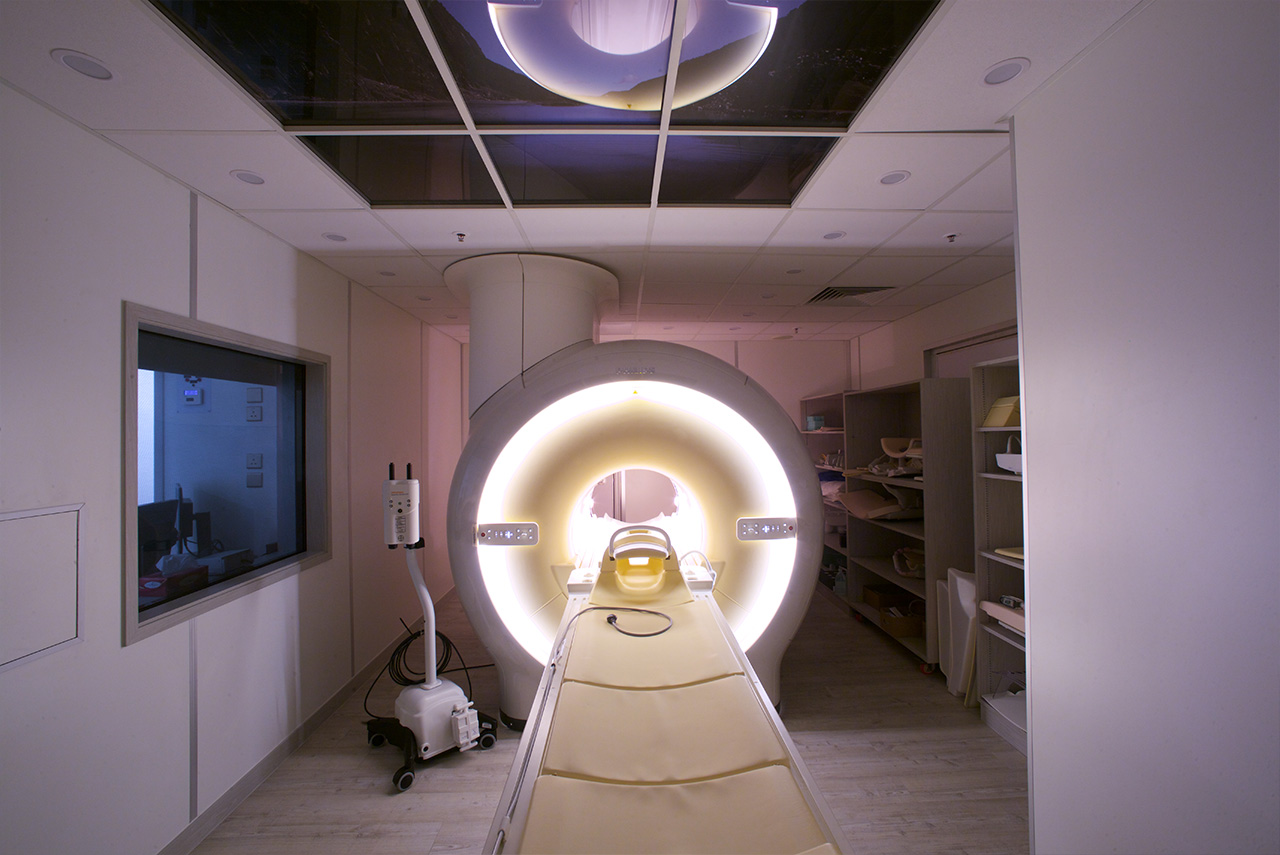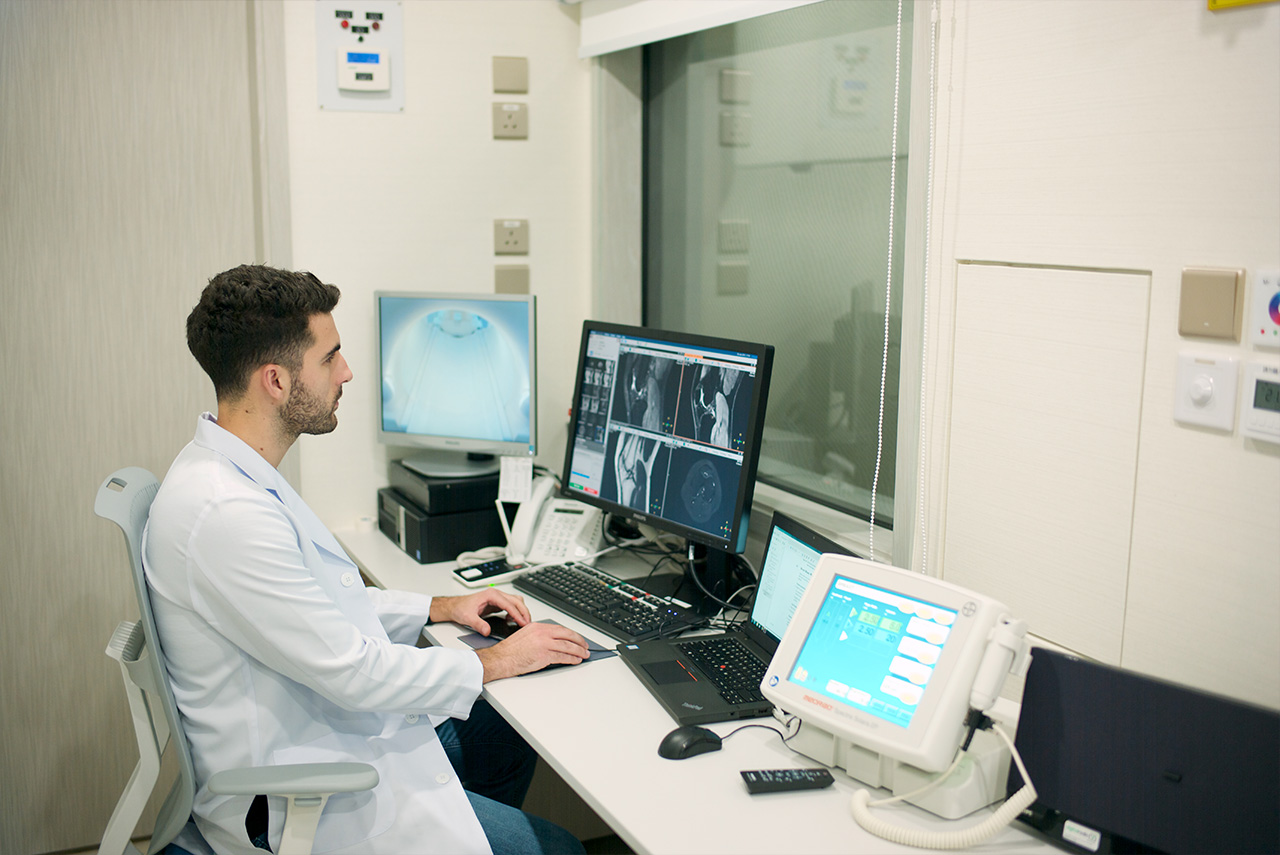An abdominal CT scan is typically used when looking at images of any internal structures of the abdomen or pelvis. This includes many aspects of the digestive system, such as the bowels, colon, stomach and kidneys. At the same time, this scan can also be used to look at the various structures of the pelvis, including any organs in the region – such as the bladder and kidneys.
CT technology is so advanced that it can present a series of benefits and uses that surpass traditional imaging methods:
Non-invasive & fast
An underlying benefit of abdominal CT scans is that they aren’t invasive for the patient at all. They are extremely beneficial when looking at structures such as the colon, delivering clear images to identify any abnormalities. In many cases, this can prevent the need for a far more uncomfortable and invasive procedure, like a colonoscopy.
Very little preparation is needed prior to a CT scan, meaning they can be delivered almost instantly. This makes them highly useful in emergency scenarios as they can be used to pinpoint any internal bleeding in the abdomen, helping patients get the quickest treatment needed and possibly saving lives.
This quickness is also beneficial in cases of appendicitis. An abdominal CT scan can help diagnose this problem when abdominal pain is present. Consequently, a patient can undergo emergency surgery to remove their appendix before complications arise and it bursts.
Multiple uses
Abdominal CT scans can be used in multiple ways to identify abnormalities and diagnose many conditions. We have already noted a couple in the previous point, but one of these scans can also be used to spot the following:
- Infections in organs
- Inflammatory bowel disease
- Tumours in organs throughout the abdomen and pelvis
- Kidney stones
- Injuries to abdominal organs
- Abscesses
In addition to this, many doctors will use abdominal CT scans away from a diagnosis perspective. Instead, they use them to help guide certain treatments – such as abscess drainages and other minimally invasive procedures in and around the abdomen. CT scans deliver real-time images, hence it is possible to use them like this.
View better images of the abdomen
A conventional x-ray has its uses, but it often struggles to provide the clearest images of the abdomen. This is because this part of the body has so many overlapping structures. You have multiple muscles, along with bony structures and different organs and tissues all in the same place. With a conventional x-ray, you often end up with some areas obscured from view because of an overlapping structure.
Abdominal CT scans benefit from the fact that the technology takes numerous pictures from different angles. These pictures can be viewed in different planes – and it’s even possible to get 3D images of the abdomen. It all means that doctors can view much better and more accurate images of this area of the body. Things aren’t obscured from view, so more accurate conclusions can be drawn.
A huge benefit of abdominal CT scans is that they allow doctors to view bone, soft tissue and blood vessels all at once. Therefore, doctors have a greater understanding of any issues within the abdomen. This is particularly useful when there are broken bones or trauma as you can see how everything has been affected.
Low-doses of radiation used
A problem with conventional x-rays is that they use the same dosage of radiation for each patient. This means that a significantly smaller patient will receive the same dose as a much larger one, increasing the impact of radiation on their body.
Naturally, a key advantage of CT scans for the abdomen is that they include much lower doses of radiation. New software developments mean that each patient gets as small a dose as possible. The technology works out how much radiation is needed depending on the size of the patient. It means that each patient is exposed to less radiation than an x-ray.
Conclusively, the benefits of abdominal CT scans are sizeable. This technology has changed the ways doctors approach image scanning, giving them a more detailed picture of the abdomen. The speed at which x-rays can be taken through CT scans means they have many uses and applications. Overall, an abdominal CT scan will provide a non-invasive way of seeing inside the abdomen and assessing all the organs and structures as quickly as possible. Real-time images allow for usage in some minor surgeries, and the detail in all picture lets doctors provide a better diagnosis for the patient.




